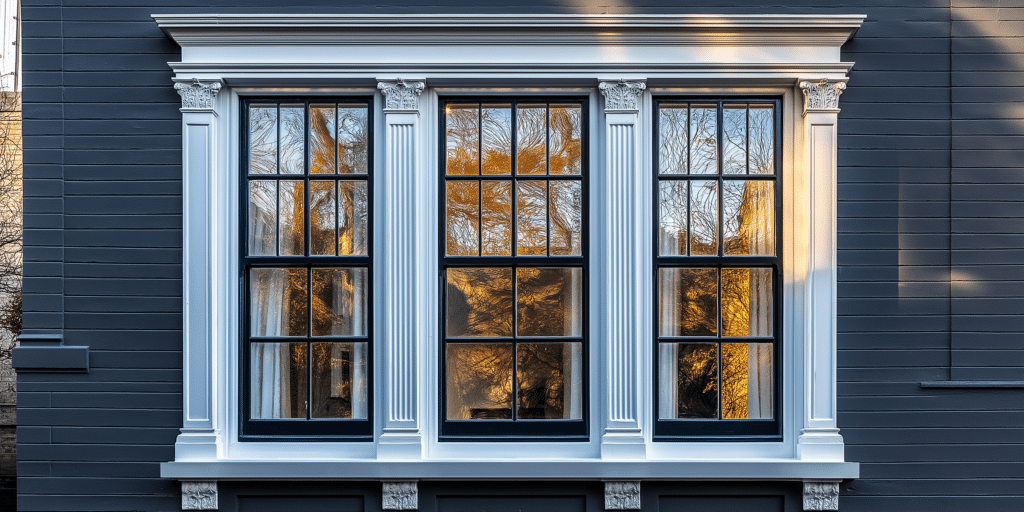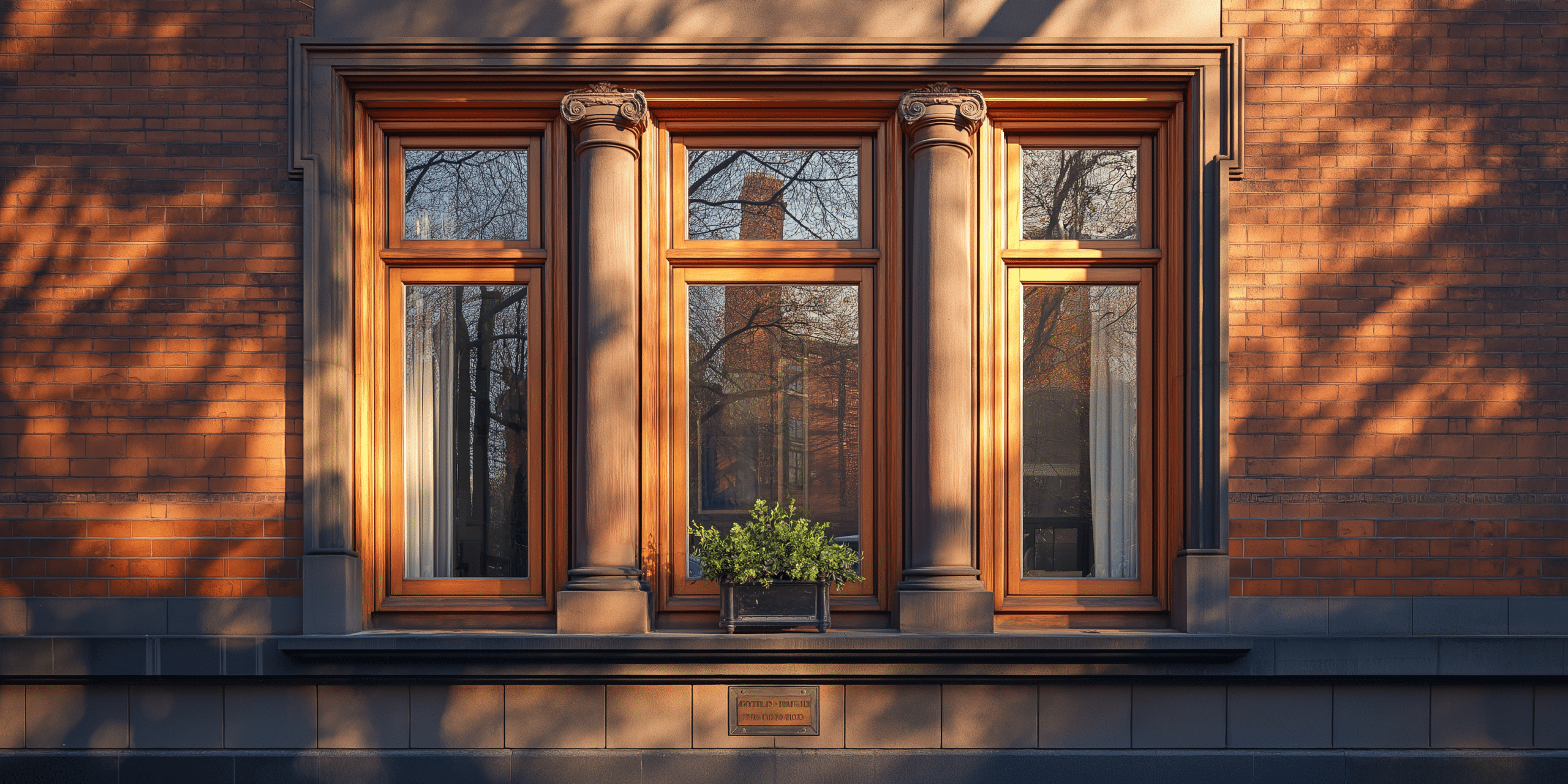What is a Sash Window Butt Hinge?

A sash window butt hinge is a specialised hinge used in traditional vertical sliding windows, such as double-hung and single-hung sash windows. It is typically located at the bottom of the sash, enabling smooth upward and downward movement. Made from robust materials like brass, stainless steel, or galvanised steel, these hinges can withstand the weight of the sash and protect against environmental damage.
What Are the Key Specifications of a Sash Window Butt Hinge?
- Material: Commonly made from brass or stainless steel, both corrosion-resistant, particularly important in coastal areas with high humidity.
- Dimensions: Butt hinges typically come in sizes such as 76mm, 102mm, or 127mm. The size is chosen based on the weight and size of the window sash.
- Weight Capacity: Butt hinges support sash windows weighing between 10kg to 50kg, depending on the material used for the sash (e.g., heavier wooden sashes versus lighter uPVC sashes).
Why Are Butt Hinges Important for Sash Windows?
The butt hinge plays a crucial role in the operational efficiency of sash windows. Without adequately functioning hinges, the window’s ability to slide vertically could be compromised, leading to operational issues or permanent damage. In fact, butt hinges are often preferred in sash window installations due to their ability to support significant weight, providing robust support and longevity for heavier sashes.
- Preventing Misalignment: Misaligned hinges can cause the window to shift within the frame, leading to gaps that reduce insulation and allow draughts and moisture in.
- Enhancing Energy Efficiency: Well-maintained hinges ensure that windows fit snugly in their frames, preventing air leaks that could increase heating costs.
- Improving Security: A properly installed butt hinge also enhances security by making it difficult for potential intruders to tamper with the window.
Different Types of Butt Hinges for Sash Windows
There are several types of sash window butt hinges available, each suited to different styles of windows and specific needs. Choosing the right hinge type can greatly impact the window’s durability and performance. Selecting the right hinge can extend the life of your sash window by providing tailored support for each window type and its specific structural requirements.
What Are the Main Types of Butt Hinges?
- Standard Butt Hinge: This is the most common type used in sash windows. Made from brass, steel, or stainless steel, it is suitable for modern and period homes. The choice of material can enhance the window’s durability and aesthetic appeal.
- Ball-Bearing Butt Hinge: Designed for heavier sash windows, these hinges use ball bearings to reduce friction, making them ideal for large, double-hung sash windows that require additional support for smooth operation.
- Rising Butt Hinge: Typically used in doors but also found in some sash windows, this hinge lifts the sash as it opens. It’s useful in older buildings where floors or frames may have settled unevenly, ensuring the window operates without scraping the sill.
- Historical Reproduction Hinges: For listed buildings or heritage properties, historical reproduction hinges are used to replicate the original fittings. These are often made from cast iron or brass, blending modern functionality with period-accurate aesthetics.
Step-by-Step Guide: Installing Sash Window Butt Hinges

Installing or replacing sash window butt hinges can seem daunting, but with the right tools and approach, it’s a manageable task that can significantly improve your window’s functionality. Correct installation of butt hinges is vital for both maintaining the aesthetic integrity of the window and ensuring long-term functionality.
What Tools Do You Need for Installation?
- Measuring tape: Accurate measurements ensure the correct positioning of the hinges.
- Screwdriver or power drill: Essential for securely attaching the hinges.
- Level: Ensures the window sits evenly in the frame.
- Lubricant: Silicone spray or graphite lubricant keeps the hinge operating smoothly after installation.
Step 1: Measure and Align
Start by measuring the window frame and sash to determine the correct placement for the hinges. For heavier windows, it’s vital to ensure the hinges are placed correctly to bear the weight evenly. Accurate measurements are crucial to ensure both the smooth operation and longevity of the hinge.
- Mark the Hinge Placement: Using a measuring tape, mark where the hinges will be attached to both the sash and the frame.
- Align the Hinges: Place the hinges in position, ensuring they are level and evenly spaced.
Step 2: Secure the Hinges
Once the hinges are aligned, attach a power drill or screwdriver to the sash and frame. Make sure the screws are tightened evenly to avoid misalignment. Proper screw alignment is key to preventing operational issues down the line.
- Check for Alignment: After securing the hinges, use a spirit level to confirm the window is perfectly aligned with the frame. Misaligned windows can cause operational difficulties and reduce the lifespan of the hinge.
Step 3: Test the Sash Movement
Open and close the sash multiple times to ensure it operates smoothly. If you encounter any resistance, you may need to adjust the hinges slightly to achieve a smoother operation. This step is especially important to ensure the window’s long-term functionality, as highlighted by experts at Reddiseals.
Step 4: Apply Lubricant
Finally, apply a small amount of lubricating oil or silicone spray to the hinges. Regular lubrication helps smooth movement and prevents rust and corrosion, especially in humid environments. Preventative maintenance, including lubrication, will significantly extend the lifespan of your sash window hinges.
Common Problems and Solutions for Sash Window Butt Hinges

Even the best-installed hinges can encounter problems over time. Recognising these issues early can save you from more costly repairs later on. Issues with sash windows, particularly hinges, account for over 40% of common repair requests in traditional properties.
What Are Common Issues with Sash Window Butt Hinges?
- Corrosion: Over time, especially in coastal environments, metal hinges can rust, affecting the window’s movement. Regular anti-corrosion spray can prevent rust and prolong the life of the hinge.
- Misalignment: The hinges may be misaligned if your sash window is hard to open or close. Tightening the screws or realigning the hinges can resolve this problem and restore functionality.
- Squeaking Hinges: Squeaking is often caused by a lack of lubrication. Applying lubricant to the hinges can eliminate the squeak and ensure smooth operation.
- Worn Hinges: Hinges that have been in place for decades can wear out, especially if made from lower-quality materials like mild steel. Replacing them with stainless steel or brass hinges ensures greater longevity and smoother operation.
Conclusion: Ensuring the Longevity of Sash Window Butt Hinges
Maintaining your sash window butt hinges is essential for the long-term functionality of your sash windows. Regular checks, lubrication, and timely replacements are critical for ensuring that your windows continue to operate smoothly and efficiently.
Whether you live in a historic home with cast iron fittings or a modern property with stainless steel hinges, proper maintenance can extend the lifespan of your windows while improving energy efficiency and security. Properly maintained sash windows not only enhance the home’s aesthetic but can also improve energy efficiency by up to 15%.




